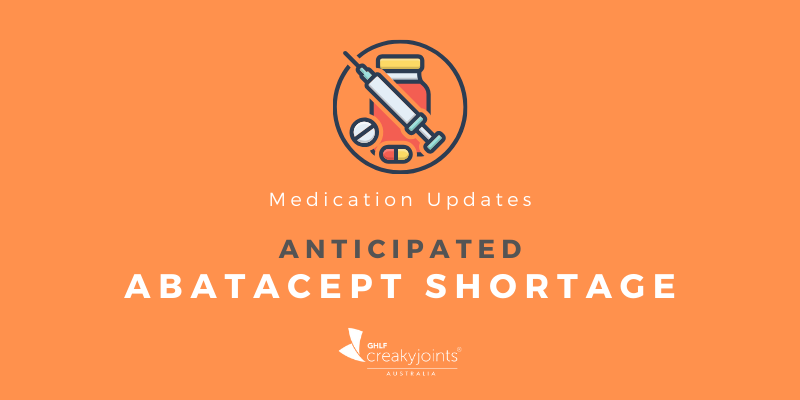In March 2019, Arthritis Australia launched their much anticipated National Strategic Action Plan for Arthritis.
The Action Plan is the result of years of work led by Arthritis Australia for the Australian Government Department of Health, in collaboration with consumer and medical groups across Australia. The vision for the plan is to provide freedom for all Australians from the burden of arthritis.
Arthritis is an umbrella term for over 100 different conditions that affect the joints and surrounding tissues. Over 4 million Australians have at least one form of arthritis, and many of these also have other chronic health issues. Arthritis affects men and women of all ages, including young children, plus the family, friends, carers, employers and communities of those affected.
A major challenge of arthritis is that it is often misunderstood by health professionals and the community at large. It is frequently misdiagnosed and undertreated, while those with arthritis are sometimes dismissed as “lazy” or “hypochondriacs” when, in fact, they are dealing with a painful and disabling life-long condition.
Some of the statistics outlined in the Action Plan are astounding. For example:
- Arthritis is the second most common cause of disability in Australia after back pain.
- Arthritis has a major impact on a person’s capacity to work and is the second most common reason for early retirement due to ill health.
- Currently, research funding for arthritis and musculoskeletal conditions in Australia is disproportionately low relative to the disease burden and cost of these conditions. These conditions account for 12 per cent of the total disease burden and nearly 9 per cent of disease expenditure, yet receive only 3 per cent of current funding.
What Is The National Strategic Action Plan For Arthritis?
“The National Strategic Action Plan for Arthritis provides an evidence-informed blueprint to guide national efforts to improve health-related quality of life for people living with arthritis, reduce the cost and prevalence of the condition, and reduce the impact on individuals, their carers and the community.”
The Action Plan identifies the areas of policy and resources that are currently not addressing the needs of those with arthritis adequately. It also sets out three key priority areas for immediate and future action.
- Awareness, prevention and education – arthritis is often incorrectly thought of as a single condition that affects only old people. Misconceptions can undermine prevention, early diagnosis and effective management. In addition, few people with arthritis receive the information and support they need to help them to manage their condition.
- High-value, person-centred care and support – currently two-thirds of Australians with arthritis report that they are faring badly with their condition, with the most common problems being inadequate pain management, lack of information and support, and the high costs of care.
- Research evidence and data – Investment is required across all areas of research from basic through to clinical research, epidemiological, translational and implementation research.
The Action Plan focuses heavily on preventing the onset and progression of arthritis as this will help to reduce the impact arthritis has on individual lives. By limiting the impact of arthritis as early as possible, we also limit the financial burden of disease at both an individual and a national level.
One of the primary desired outcomes of the Action Plan is equitable and timely access to appropriate, comprehensive and person-centred healthcare services for people with arthritis.
Who is responsible for implementing the Action Plan?
The actions outlined in the National Strategic Action Plan for Arthritis will require contributions from a wide range of partners, including:
- Individuals, carers and families
- All levels of government
- Non-government organisations
- The public and private health sectors, including all healthcare providers and private health insurers
- Industry
- Researchers and academics
In other words, the Action Plan requires shared responsibility for all outcomes and it should not be left up to individual partners or political parties to shoulder the full responsibility. Above all, it requires all partners to collaborate to achieve the best outcomes.
What can you do to help improve the lives of those with arthritis?
CreakyJoints Australia support Arthritis Australia in calling all levels of government plus all the partners listed above to invest in implementing the Action Plan to transform future outcomes and quality of life for people living with the pain of arthritis.
As individuals, we can all speak up and ensure that we receive quality person-centred care from all the health professionals and organisations we rely on for support.
You can also choose to become a consumer advocate within the yet-to-be-established National Arthritis Collaboration (outlined within the Action Plan). The Collaboration would work with all stakeholder groups and would include clinicians, researchers, consumers, policy makers and health service providers. Contact Arthritis Australia for further details about the proposed Collaboration.
Finally, you can help CreakyJoints Australia by supporting our advocacy initiatives. We are currently looking for a representative from Tasmania and from the Northern Territory to join the existing members from Australia and New Zealand on our CreakyJoints Australia Patient Council.
Further Reading
- CreakyJoints Australia Patient Council NSW Representative, Christine Maurice, shares her arthritis journey with Arthritis Australia: A Young Woman’s Journey With Non-radiographic Axial Spondyloarthritis
- Government Pensions, Benefits And Services For People With Chronic Health Issues
- Choosing Your Healthcare Team





